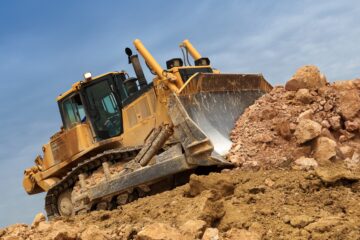
Managing Equipment and Components is a tricky business. Condition Monitoring Inspections provide a solid basis for identifying and scheduling maintenance activities: –
- Undercarriage Wear Surfaces condition and observations of accelerated wear,
- Bucket integrity, GET and presence of cracks with propagation rates
- Review of the frame, Boom and stick integrity for cracking and weld condition
- Pin and Bush condition, wear and play
- Hydraulic system performance, leaks and component condition etc…
In contrast, the most expensive way to manage equipment is to fix the machines when they break down. By this stage, the components have failed and there will be a rush to obtain parts at short notice and get the machine back to work. Too often this is the default position because companies just do not have sufficient technical expertise and resource within to be able to complete Condition Monitoring Inspections.
The most proactive way to manage the machines is to regularly perform Condition Monitoring Inspections to identify when the components will be reaching their wear limits and to plan for their replacement on favorable terms. The results of Condition Monitoring Inspections are:
- Identified Actionable items which become Work Orders scheduled for completion at machine downtime
- A dataset against which all future planning and budgeting can be performed with confidence.
- A dataset with Cost per Hour benchmarks for future contract proposals
TrackTreads, one system for a single purpose – Managing wear material on Undercarriage, Buckets, Trays, Brake packs, Steering Ball Studs



0 Comments